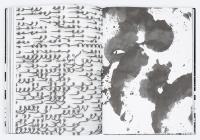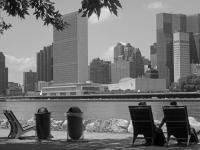Artifact: Curtain Walls
Shenzhen & Hong Kong, China
Bi-City Biennale of Urbanism/Architecture, Shenzhen Municipal People's Government Building
This curtain wall research reveals that architects are approaching the design of high-rise buildings as a process of dressing up the exteriors, losing a real sense of the socio-economic bearings in the making of buildings. This installation sets up two common scaffolding materials of steel and bamboo against each other, portraying relationships of the utility and decorative dimensions of the building envelope. Steel pipe scaffolding forms the "weak" form of this composition, because it is constructed without diagonal bracing, having no resistance against shear forces. Conversely, the weaker bamboo scaffolding was deployed as a strong form of pure diagonal bracing, rendering it indispensible within the whole configuration, without which, the steel scaffolding would collapse. However, the diagonal bamboo form goes on to take on an excessively decorative pattern, to the extent that its sheer weight would become a liability to the structural performance of the installation. These dynamic and relational studies simply expose the contradictions found in the design of curtain walls today.






